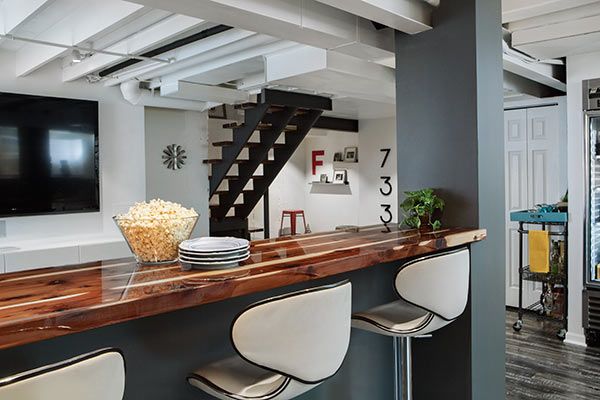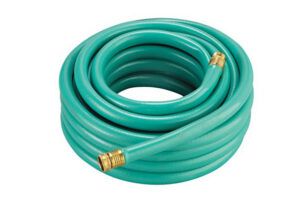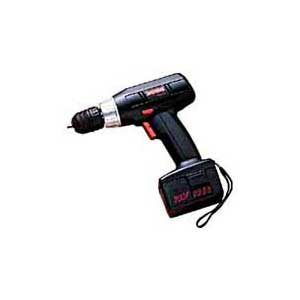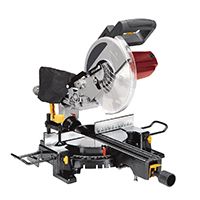We may be compensated if you purchase through links on our website. Our team is committed to delivering honest, objective, and independent reviews on home products and services.
Building a basement bar can transform an underutilized basement space into a cozy entertainment hub for family and friends. Whether you’re envisioning a simple setup for casual gatherings or a fully equipped bar for hosting parties, this guide will walk you through the process of creating your perfect basement bar.
Planning Your Basement Bar Project
Before diving into construction, you want to have a solid plan in place to ensure smooth operation. Follow these steps to set your project up for success.
Assessing Your Space and Budget
Start by evaluating your basement’s layout and dimensions. Measure the area where you plan to install the bar, noting any existing plumbing or electrical hookups. Incorporate these hookups into your plans can potentially save you money since they’re already installed.
Next, consider your budget. How much are you willing to invest in this project? A basic DIY bar can cost as little as $800, while a high-end custom installation might run up to $27,500.* If you’re hiring professionals, factor in costs for materials, appliances, and labor. Remember to leave some wiggle room in your budget for unexpected expenses that may arise during the project.
*Cost information based on 2024 reports from Angi and HomeGuide.
Obtaining Necessary Permits
Before starting to build, check with your local planning and building boards about the required permits. Some areas may require licensed electricians or plumbers to perform or sign off on certain aspects of the work. Failing to get proper permits can result in fines or even having to remove your newly built bar, so tackle this step early in the process.
Research local building codes and regulations to make sure your bar meets all safety standards. This is especially important if you’re planning to install plumbing or electrical systems. By addressing these requirements upfront, you’ll avoid potential headaches and delays later in the project.
Components of a Basement Bar
Let’s explore the elements that make up a functional and inviting bar area.
Bar Counter and Seating
The bar counter is the centerpiece of your basement bar. Standard dimensions for a bar counter are 42 inches high and 24 inches deep. When planning your bar top, we recommend aiming for a width of 16–20 inches, including overhang, for easy drink service space without compromising comfort.
For seating, choose barstools that complement your counter height. Most barstools range from 28–32 inches from seat to floor. Allow about 12 inches between the seat top and the counter bottom for comfortable leg room. Plan for 24–30 inches of bar space per seat, and check for 18 inches of clearance between the counter edge and the back of the stool for easy access.
Work Counter and Sink
You’ll need a work counter for drink preparation and serving. If you’re building a wet bar, you’ll also install a sink here. Having a dedicated prep area makes bartending more efficient and enjoyable, whether you’re mixing cocktails or preparing garnishes.
Consider incorporating a small refrigerator or ice maker under the work counter for easy access to cold ingredients. If space allows, include storage for glasses, mixers, and bar tools to keep everything within reach.
Footrail and Bar Molding
A footrail adds both comfort and a professional touch to your bar. Install it about 7–9 inches above the floor. If you prefer, you can opt for barstools with built-in footrests instead. This feature allows guests to sit comfortably for extended periods, enhancing their overall experience.
Bar molding, a curved lip at the countertop’s edge, serves both practical and aesthetic purposes. It prevents drinks from sliding off and provides a comfortable resting place for elbows, enhancing the overall bar experience. Choose a molding style that complements your bar’s design theme for a cohesive look.
Editor Mark Powers gives a walkthrough of a DIY bar build in the video below.
Selecting Materials for Your Basement Bar
Creating a basement bar that reflects your style and meets your entertainment needs requires thoughtful design. Consider the overall theme and any special features you want to incorporate to make your bar unique and inviting.
Choosing a Theme
Your bar’s theme sets the tone for the entire space. Are you aiming for a classic pub atmosphere, a sleek modern lounge, or perhaps a tiki-inspired oasis? Your theme will guide your choices in materials, colors, and decor. For instance, a rustic theme might incorporate reclaimed wood and iron accents, while a contemporary design could feature clean lines and minimalist fixtures. Consider your home’s existing style and how your basement bar can complement it. This way, you create a seamless transition between spaces and make your bar feel like a natural extension of your living area.
Incorporating Entertainment Features
Think about how you’ll use your bar for entertainment. Do you want to install a TV to watch sports? Maybe a sound system for music? Consider incorporating room divider ideas to create separate zones within your basement, such as a gaming area or a cozy seating nook. These features can transform your bar from a simple drink station into a full-fledged entertainment center.
Don’t forget about lighting options to set the mood. Dimmable lights or color-changing LED strips can add ambiance and versatility to your space. You might also want to include a small stage area for live music or karaoke nights if space permits.
Selecting Materials for Your Bar
The materials you choose for your basement bar will impact its durability, appearance, and overall cost.
Countertop Options
Your bar countertop needs to be both attractive and durable. Consider factors like maintenance requirements, cost, and how well the material fits your overall design theme when making your choice. Remember that your countertop will be the focal point of your bar, so choose a material that makes a statement while standing up to regular use. Here are some popular options:
- Concrete: Can be customized in shape and color, providing a unique, industrial look.
- Granite: Highly durable and available in various colors, but can be expensive.
- Quartz: Nonporous and resistant to stains, making it ideal for a bar setting.
- Wood: Offers a warm, classic look but requires regular maintenance to prevent water damage.
Bar Structure Materials
The structure of your bar is typically framed in wood, which can then be finished in various materials to achieve your desired look. Remember to choose materials that can withstand the humidity often found in basements to help your bar’s longevity. Proper sealing and finishing can help protect your bar from moisture-related issues and extend its lifespan. Options include the following:
- Reclaimed materials for a rustic, eco-friendly touch
- Wood veneer or high-quality plywood for a natural look
- Tile or stone for an upscale appearance
- Metal panels for an industrial vibe
In the video below, This Old House carpenter Nathan Gilbert crafts a bar top out of wood.
Installing Plumbing and Electrical Systems for Your Basement Bar
Proper plumbing and electrical installation are necessary for a functional basement bar. These systems require careful planning and professional expertise to guarantee safety and compliance with local codes.
Water Supply and Drainage
If you’re installing a sink, you’ll need to connect it to your home’s water supply and drainage system. This might involve extending existing plumbing lines or installing new ones. When planning your bar’s layout, consider the location of your main water line and sewer access. If possible, position your bar near existing plumbing to minimize installation costs.
Create proper drainage by installing a P-trap under the sink to prevent sewer gasses from entering your bar area. If your basement is below the main sewer line, you may need to install a pump to move wastewater up to the main drain.
Lighting and Power Outlets
Good lighting creates the right ambiance and safe drink preparation. A mix of ambient, task, and accent lighting is ideal. Install dimmer switches to easily set the mood, or under-cabinet lighting to illuminate your work area and create a warm glow. Remember to include plenty of power outlets for blenders, mini-fridges, and other bar appliances.
For safety, make sure all basement electrical work complies with local codes and is performed by a licensed electrician where required.
Equipping Your Bar With Appliances
Appliances can elevate your basement bar from good to great. Consider which appliances match your needs and budget to create a fully functional entertainment space.
Refrigeration Units
A reliable refrigerator keeps your beverages frosty. Here are some options to consider:
- Kegerators: Perfect for beer enthusiasts who want draft beer on tap
- Under-counter refrigerators: Save space and blend seamlessly with your bar design
- Wine coolers: Ideal for maintaining proper storage temperatures for your wine collection
Beer Tap Systems
If you’re a beer lover, consider installing a draft system. A basic keg tap kit costs as little as $172, while more advanced ones cost upwards of $800 and include all the necessary components to get beer from keg to glass.* For a more advanced setup, you might opt for a multitap system that can accommodate different types of beer simultaneously.
When installing a beer tap system, pay attention to proper line cleaning and maintenance to get the best taste and quality for your draft beers. Including a rinse station or glass washer nearby adds convenience.
*Cost information based on 2024 reports from Coldbreak and Brewskis Beverage Service.
DIY vs. Professional Installation of Basement Bars
Deciding whether to build your basement bar yourself or hire professionals depends on your skills, budget, and the complexity of your design. Let’s explore both options to help you make the best choice for your project.
Skills Required for DIY Construction
You’ll need to be comfortable with the following tasks to build a bar yourself:
- Basic carpentry
- Plumbing (if installing a sink)
- Electrical work (for lighting and appliances)
- Finishing techniques (staining, painting, etc.)
Required Tools
Below are all the tools you need to build your bar:
 Air hose
Air hose Brad nail gun
Brad nail gun Caulk gun
Caulk gun Clamps
Clamps Cordless drill
Cordless drill Framing square
Framing square Jigsaw
Jigsaw Level
Level Miter saw
Miter saw Orbital sander
Orbital sander Safety glasses
Safety glasses
If you’re confident in these areas and have the time to dedicate to the project, DIY is the cheaper option. But be honest about your abilities and the complexity of your design—overestimating your skills could lead to costly mistakes or safety hazards.
When To Hire a Professional
We recommend hiring a pro if any of the following circumstances apply:
- Your design is complex or requires structural changes
- You’re not comfortable with plumbing or electrical work
- You want a high-end, custom finish
- Time is a factor, and you need the project completed quickly
If you’re going to hire professionals, get multiple quotes, check references, and make sure they are licensed and insured for your protection.













